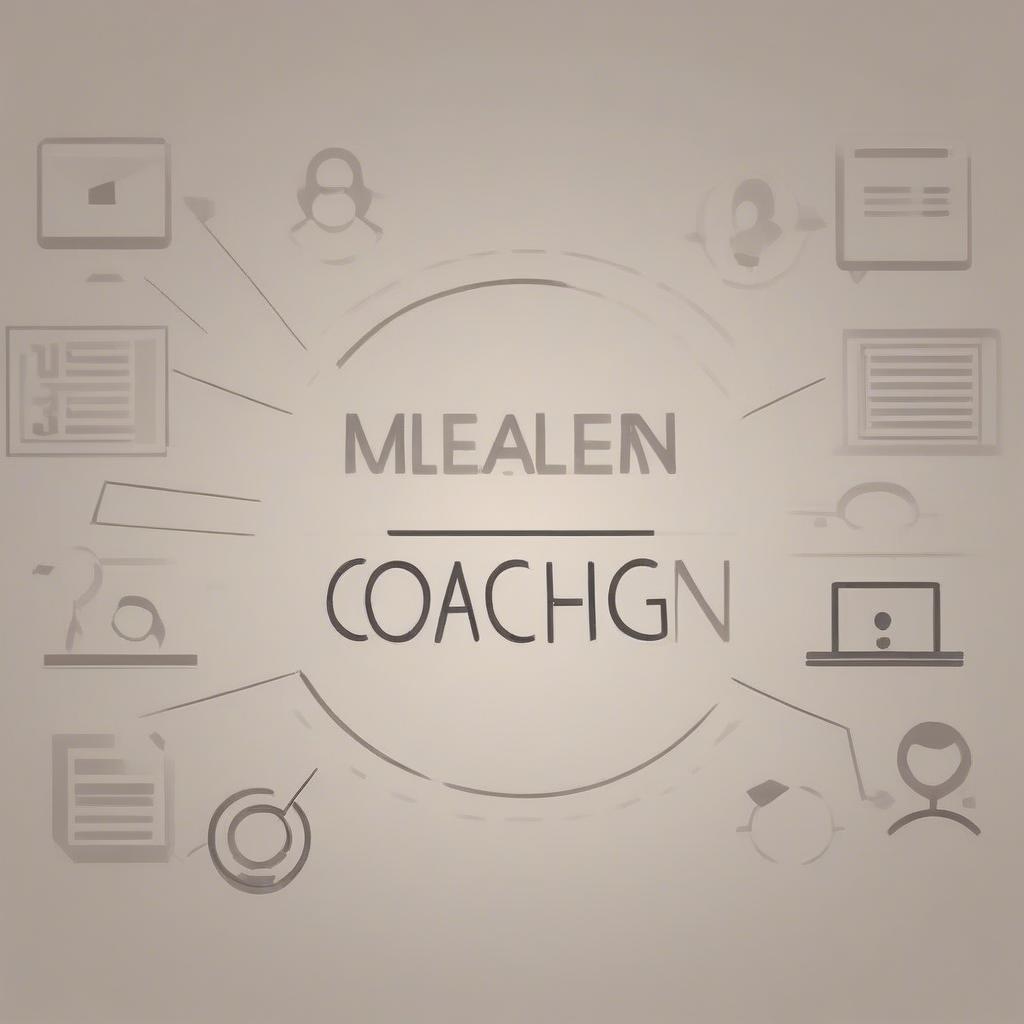
The Tightrope Walk: Balancing Coaching Costs and Impact
We all know the power of coaching. It’s the catalyst for growth, the unlock for potential, and the compass that guides us towards our goals. But, let’s be honest, coaching – whether for personal development, leadership skills, or business strategy – can come with a hefty price tag. The question isn’t if we should invest in coaching, but how we can optimize those coaching expenses to achieve maximum impact without sacrificing the quality we deserve. This article is your guide to navigating this tricky tightrope walk, exploring strategies for expense optimization while ensuring you’re still receiving top-tier coaching support. We’ll be focusing on achieving financial efficiency in your coaching investments, giving you the tools to make smart, informed decisions.
Why is Expense Optimization in Coaching so Important?
Before diving into the "how," let’s understand the "why." Ignoring coaching cost management can lead to several pitfalls:
- Financial Strain: Overspending on coaching can put a dent in your budget, hindering other crucial investments. This is true for individuals, small businesses, and large corporations alike.
- Opportunity Cost: Money spent unwisely on coaching is money not spent on other opportunities – be it business development, skill upgrades, or simply crucial operational necessities.
- Diminished ROI: When you don’t manage expenses effectively, you risk decreasing the overall return on investment (ROI) you receive from your coaching engagement. Are you really maximizing what you’re paying for?
- Long-term Sustainability: Sustainable growth requires sustainable financial practices. Uncontrolled coaching expenses can jeopardize the long-term viability of coaching engagements and their impact.
- Lack of Focus: Financial worries related to coaching can distract you and your team, diminishing focus on the actual coaching process and it’s potential benefits.
Therefore, understanding financial efficiency in coaching isn’t just about saving money; it’s about making your investment smarter, allowing you to achieve more with less.
Understanding Your Coaching Needs: The Foundation for Smart Spending
Before you even start looking at price tags, you must define what you actually need from your coaching engagement. This is the bedrock of any effective coaching cost management strategy.
Self-Assessment: What Are Your Goals and Challenges?
- Identify Specific Needs: Don’t just say "I need help with leadership." Pinpoint the exact challenges. Is it delegation, communication, conflict resolution, strategic planning, or something else entirely?
- Define Measurable Goals: What will success look like? Be specific. Instead of "I want to be a better leader," say, "I want to improve my team’s performance by 15% within the next six months, with specific measurable improvements in team-member engagement."
- Consider Your Current Skills: What skills do you already possess? Which areas require the most attention? Honest self-reflection is crucial here.
Matching Coaching Type to Your Needs
Different coaching types address different needs. Understand what’s available to optimize your expense optimization efforts:
- Executive Coaching: Focuses on leadership development, strategic thinking, and overall organizational impact. Often involves higher fees due to the experience and expertise required.
- Business Coaching: Concentrates on specific business aspects – marketing, sales, operations, and finance. Good for entrepreneurs and small business owners.
- Career Coaching: Helps individuals navigate their career paths, find new jobs, or transition to new roles. More affordable and often focused on practical action.
- Life Coaching: Addresses personal growth, fulfillment, and well-being. Usually, the most affordable type of coaching.
- Skills-Based Coaching: Focuses on acquiring or improving specific skills, such as public speaking, presentation techniques, or time management. Fees vary depending on the expertise and complexity of the skills involved.
Choosing the right type of coaching saves time and money by aligning resources with your specific objectives. It contributes significantly to financial efficiency.
Assessing the Coaching Engagement Level
Consider how much coaching support you actually require:
- Frequency: Do you need weekly sessions, bi-weekly, or monthly?
- Duration: Will this be a short engagement (3-6 months) or a longer-term partnership?
- Session Length: Are you comfortable with 45-minute sessions, or do you need a full hour?
- Availability: Do you require regular email support, or will scheduled meetings be sufficient?
By answering these questions, you can better evaluate coaching proposals and find the most financially efficient option that fits your needs.
Strategies for Effective Coaching Cost Management
Once you’ve identified your coaching needs, you can start exploring strategies to optimize your coaching cost management without compromising quality.
1. The Power of the Initial Consultation
- Utilize Free Consultations: Many coaches offer a free initial consultation. Use these sessions to ask targeted questions:
- What is your coaching approach?
- How do you measure success?
- What are your fees and payment options?
- Can you provide testimonials or references?
- Do you offer any packages or discounts?
- Assess Compatibility: This consultation is also an opportunity to see if you connect with the coach’s style and personality. This can be as important as their credentials.
- Evaluate Value: Don’t just focus on the hourly rate, focus on the value you anticipate to gain from the engagement. This will improve the overall financial efficiency of your decision-making process.
2. Exploring Alternative Coaching Models
- Group Coaching: If you have similar goals to others in your organization, group coaching can be a cost-effective alternative to individual sessions. You get the benefit of peer support and the coach’s expertise at a lower per-person cost.
- Online Coaching: Online platforms often offer coaching at a lower price point compared to in-person sessions. They also provide greater flexibility and accessibility.
- Hybrid Approach: Consider combining online and in-person coaching for a balance of convenience and face-to-face interaction. This hybrid model can contribute to better expense optimization.
- Short-Term Intensive Programs: Instead of committing to a long-term engagement, look for focused short programs designed to address specific needs. This might be a more financially efficient way to start.
3. Negotiating Fees and Payment Terms
- Don’t Be Afraid to Negotiate: Many coaches are willing to negotiate their rates, especially for longer engagements or group sessions.
- Ask About Payment Plans: Some coaches offer payment plans or tiered pricing based on the commitment.
- Seek Out Discounts: Inquire about referral discounts, package deals, or early bird rates.
- Value-Based Pricing: Some coaches offer value-based pricing, where the fees are tied to the results they achieve. This is an ideal scenario to ensure that the coaching engagement is financially efficient because you are paying for actual results.
4. Leveraging Resources and Templates
- Free Templates and Guides: Utilize online resources that offer templates for goal setting, action planning, and progress tracking. This reduces the need for the coach to spend time on these tasks.
- Self-Paced Learning: Supplement your coaching sessions with self-paced learning resources like online courses, books, and articles.
- Internal Coaching/Mentorship programs: Explore if your company offers internal coaching/mentorship programs that could help to achieve your objectives while saving on the coaching cost management
5. Focusing on Value, Not Just Cost
- Look Beyond the Hourly Rate: A lower hourly rate doesn’t always equate to better value. Evaluate the coach’s experience, expertise, and track record.
- Measure Your Progress: Track your progress against your defined goals. This will help you determine whether the coaching engagement is delivering the desired ROI.
- Seek Feedback: Get feedback from stakeholders on how the coaching is impacting your performance and goals. This ensures the coaching investment remains financially efficient.
6. Regularly Review and Reassess
- Regular Check-ins: At predetermined intervals (e.g., every month or quarter), review your progress and reassess your coaching needs. Are you on track to achieve your goals?
- Adjust Your Approach: If needed, adjust your coaching plan or explore alternative strategies to ensure you’re maximizing your investment. A constant review process will help maintain financial efficiency.
- Don’t Be Afraid to Change Course: If you feel that the coaching engagement is not delivering the desired results, don’t hesitate to change course or seek a different coach.
Case Studies: Real-World Examples of Successful Expense Optimization
To bring these strategies to life, let’s look at some hypothetical case studies:
Case Study 1: The Entrepreneur on a Budget
- Challenge: A small business owner, Sarah, needs help with business strategy and marketing but is operating on a limited budget.
- Solution: Sarah opted for a combination of group coaching and online resources. She enrolled in a 6-month online business coaching program, supplemented it with free online marketing templates, and participated in two group coaching sessions a month.
- Result: Sarah gained valuable insights, developed a clear marketing strategy, and stayed within her budget. By carefully combining resources and selecting the right coaching model she optimized her coaching cost management.
Case Study 2: The Corporate Leader Seeking Development
- Challenge: John, a senior manager, needs to improve his leadership skills but his company has allocated a limited budget for coaching.
- Solution: John negotiated a package deal with his coach. He agreed to attend shorter weekly sessions for three months and utilized a goal setting and progress tracking template to enhance effectiveness.
- Result: John improved his delegation and communication skills significantly, while the reduced session length and the use of a template allowed for better expense optimization.
Case Study 3: The Individual in Career Transition
- Challenge: Emily is looking to change careers but is worried about the costs associated with a career coach.
- Solution: Emily chose to participate in a monthly group career coaching session online. She coupled this with individual feedback and reviewed online job search and resume writing templates.
- Result: Emily gained job search confidence, updated her resume, and transitioned into a new industry all within her budget and time frame. She showed great financial efficiency by combining different modes of support.
These cases demonstrate that effective coaching cost management is achievable through informed decisions, careful planning, and a willingness to explore alternative approaches.
The Role of Learn Business in Supporting Your Coaching Journey
At Learn Business, we understand the importance of financial efficiency in every aspect of business development, including coaching. We are committed to supporting businesses of all sizes by offering guidance and templates tailored to their specific needs.
How Learn Business Helps Optimize Your Coaching Expenses
- Free Resources: We provide access to a library of free templates and guides for goal setting, action planning, and progress tracking. This reduces the need for your coach to create these resources, potentially saving you time and money.
- Actionable Templates: Our business templates are designed to be practical and easily implementable, enabling businesses to apply what they learn during coaching sessions effectively.
- Holistic Support: We offer a range of resources covering various business aspects, ensuring you have a holistic support system to complement your coaching engagement.
- Financial Focus: We offer resources and strategies for budgeting and financial management, aligning with the core principle of coaching cost management.
- Community Connection: We also provide a platform for businesses to connect and share their experiences, fostering a supportive environment for continuous improvement.
Utilizing Learn Business to Enhance Your Coaching Outcomes
- Pre-Coaching Preparation: Use our templates to prepare for your coaching sessions, ensuring you arrive with clear objectives and a structured plan.
- Post-Coaching Implementation: Leverage our resources to implement the strategies and action items discussed during your sessions, maximizing the impact of your coaching investment.
- Continuous Improvement: Regularly review your progress and utilize our guides to identify areas for improvement, ensuring the long-term financial efficiency of your coaching investment.
Learn Business aims to be your partner in success, helping you make smart, informed decisions that drive both growth and financial efficiency.
Conclusion: Mastering the Art of Smart Coaching Investments
Optimizing your coaching expenses without sacrificing quality is not just about saving money; it’s about making strategic decisions that maximize your return on investment. By understanding your needs, exploring alternative coaching models, negotiating fees, and utilizing readily available resources you can achieve the desired results without breaking the bank. Remember that financial efficiency comes through informed decisions and a focused approach. This means focusing on the value and impact rather than just the cost. With careful planning, thoughtful execution, and the right support, you can embark on a successful coaching journey that drives growth and delivers exceptional value. And remember, Learn Business is here to guide you every step of the way, empowering you to achieve your business and personal goals efficiently and effectively. By focusing on the right strategies, and understanding your needs, you can truly master the art of smart coaching investments.



Leave a Reply